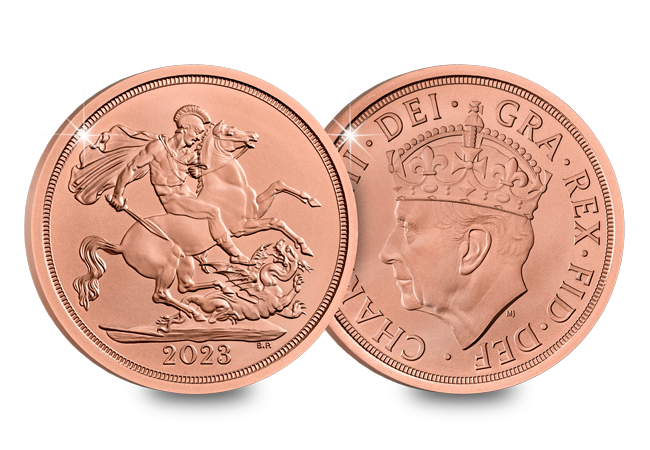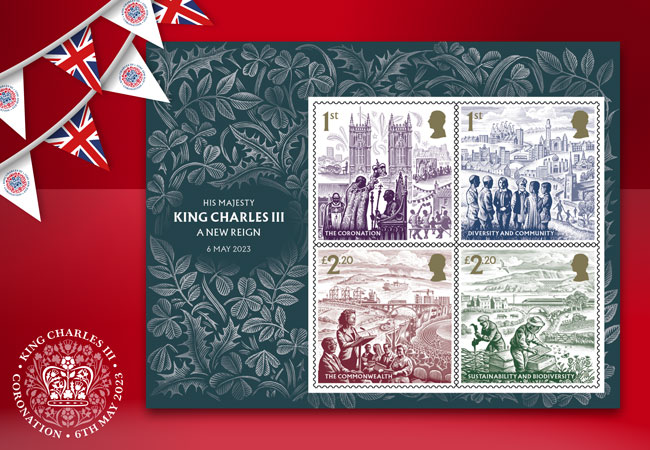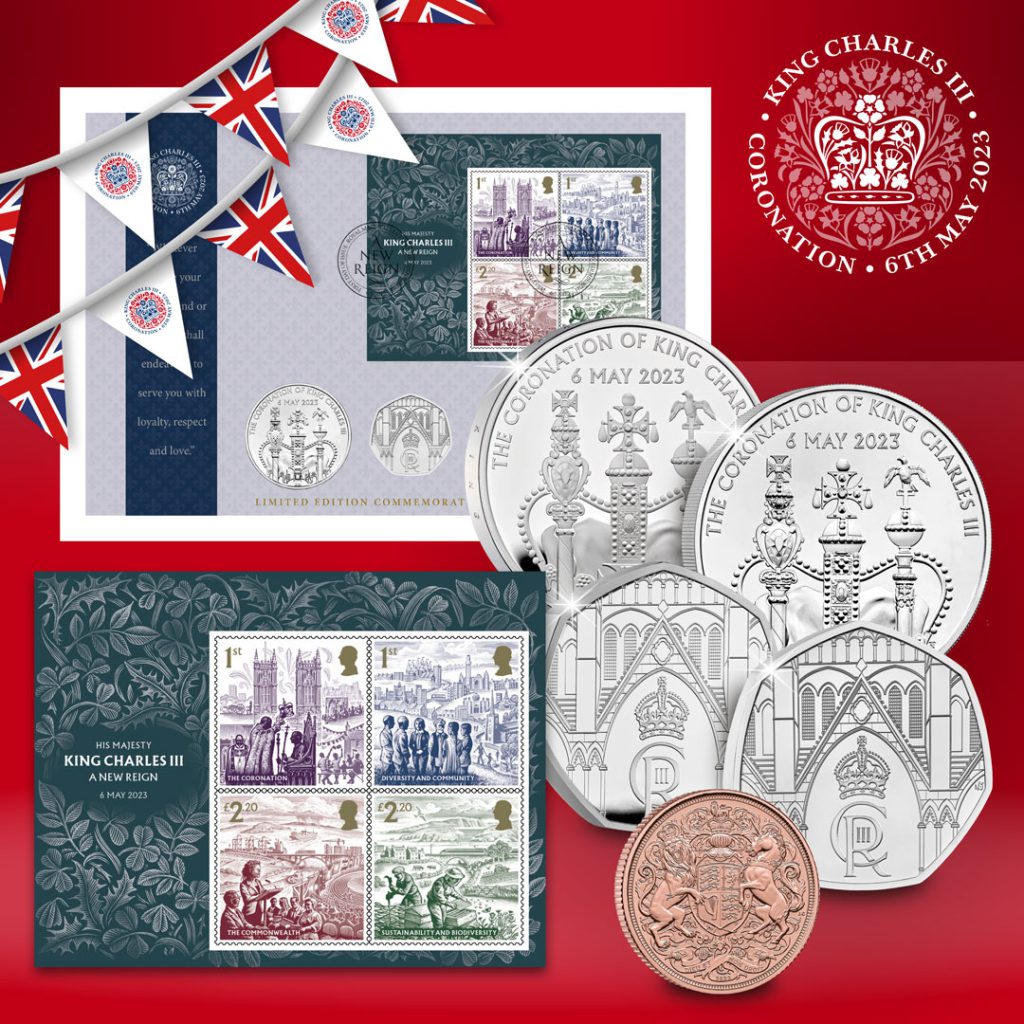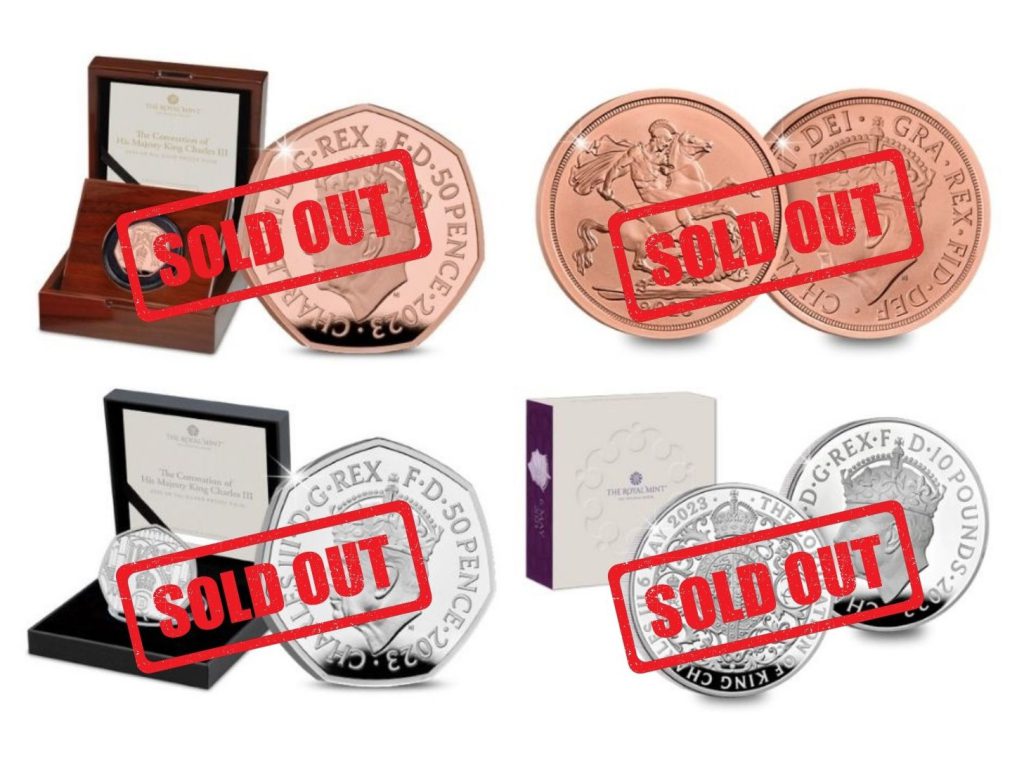Uncategorised
The UK 2023 Sovereign: Register your interest

The Coronation of His Majesty King Charles III was one of the most momentous occasions in modern British History, marking the culmination of a 74-year journey to the throne.
A huge global spectacle, the ceremony itself defined a new chapter for the British monarchy, as His Majesty The King was crowned alongside Her Majesty The Queen.
And now, you can commemorate this landmark event with the new Coronation Sovereign 2023 Range, celebrating The King’s coronation.
The range isn’t available just yet, but the Struck on the Day Coronation Sovereign has already sold out – so make sure you register your interest below to be the first to receive the latest news on this milestone Sovereign release.
BREAKING NEWS: Royal Mail reveals the Official Coronation Stamps!
Today, Royal Mail have revealed their brand-new Coronation stamps. Comprised of four stamps, the official Coronation Miniature Sheet pays tribute to four elements of King Charles III’s legacy.
And following the insatiable demand we have already seen this week for The Royal Mint’s Coronation range, collectors are desperate to pair their coin with the official Coronation stamps!
That’s because, on 6th May, we will mark the biggest royal event in decades.
So, why not kick off the celebrations with an exclusive combination of numismatic and philatelic history?
Read on to learn more about the stamps themselves, and how you can secure all four in an exclusive presentation alongside some of the UK 2023 Coronation coins…
The Design

Designed by British artist, Andrew Davidson, Royal Mail’s official Coronation Miniature Sheet symbolises four elements of King Charles’ legacy.
Each stamp has been divided into representations of the Coronation, Diversity and Community, The Commonwealth, and Sustainability and Biodiversity. The designs embody themes of heritage, tradition, cohesion, democracy, peace, and nature – integral values to His Majesty.
These stamps have been thoughtfully set against a design of intermingling foliage, representing the union of the four UK countries: the rose, thistle, daffodil, and shamrock.
UK 2023 Coronation Covers
And today, we have been able to present all four of these official UK Coronation stamps in limited edition covers.
Paired alongside the UK 2023 Coronation 50p, £5, or both, you can secure the Coronation Miniature Sheet beside The Royal Mint’s new coins in either Brilliant Uncirculated or Silver Proof!
Or, you can get your hands on the extremely sought-after UK 2022 Memorial Sovereign – the first to feature His Majesty – in an exclusive cover with these stunning new Coronation stamps.

These limited edition covers are the perfect way to capture this poignant moment in history. In fact, they have all been postmarked by Royal Mail on the date of His Majesty’s Coronation – 6th May – which truly preserves this extraordinary historical feat and ensures no more can ever be made…
Extreme Demand for Coronation Coins
When The Royal Mint launched the UK 2023 Coronation coin range on the 24th April, nothing could have prepared collectors for the insatiable demand…
Nearly 70,000 people queued for the launch, and the Coronation coins were being snapped up within minutes.
So considering this could be your last chance to secure a UK 2023 Coronation coin, you don’t want to miss out on these exclusive coin covers.
Click here to explore the range, with prices starting from £39.99 >>
What happened when The Royal Mint launched the official Coronation coins?
Today, we witnessed the monumental launch of the official UK Coronation coin range.
And as you would imagine, the coins released for the biggest royal event in decades have generated insatiable demand. The Royal Mint have already SOLD-OUT THIRTEEN of their specifications.
Featuring a 50p, £5 and an Ounce range, these FIRST Coronation coins were made available in BU, Silver Proof, Silver Piedfort, and the most prestigious quality – Gold Proof.
OVER 60,000 Collectors Waited…
The story began at 9am, when we were greeted by a queue of over 60,000 on The Royal Mint’s website.
And since then, we have seen almost immediate SELL-OUTS…

Sell-Out After Sell-Out
The growing queue soon resulted in the 16-MINUTE SELL-OUT of the Struck on the Day Sovereign, going off-sale from the Mint at 9:16am.
The sell-out of the 1/40th oz Gold coin came next, selling out an impressive entire edition limit of 2,023 in just over twenty minutes!
The prestigious 1oz and ¼ oz Gold Proof Coronation coins soon followed suit and sold-out too.
Next were all the coins in the Gold Ounce range to sell-out of their edition limits, which ranged from 500 to 2,023.
Then, the 5oz Silver with an edition limit of 1,500 was next to sell-out…

Even the large edition limit of 3,250 belonging to the Silver Piedfort 50p and Silver Piedfort £5 coins have BOTH SOLD-OUT!
But most impressively so far, BOTH the prestigious Gold Proof 50p and Gold Proof £5 specifications have sold-out of their 500 edition limits!
